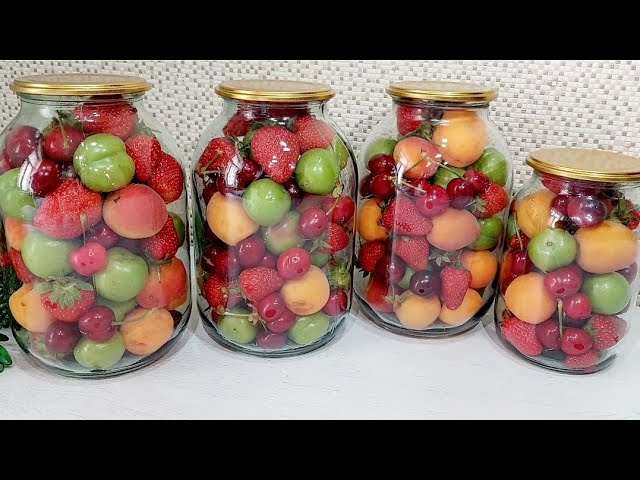In this article, we’ll explore various ways to preserve food without relying on refrigeration. Whether you’re interested in off-grid living or simply want to reduce your dependence on electricity, these methods can help prolong the shelf life of your food. From canning and dehydration to smoking and fermenting, we’ll discuss different techniques that can be used to preserve fruits, vegetables, meats, and more. So if you’re curious about alternative ways to store food without refrigeration, keep reading to learn more!
Exploring Ways to Preserve Food Without Refrigeration
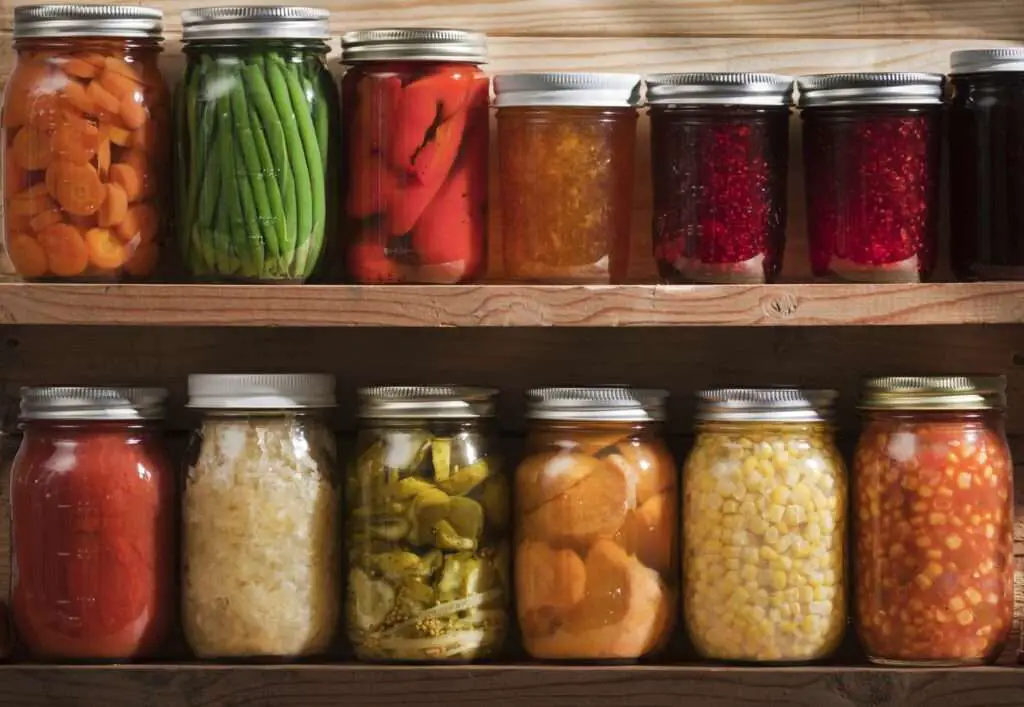
Overview of Food Preservation
Introduction to food preservation
Food preservation is the process of extending the shelf life of perishable food items by applying various techniques to inhibit the growth of microorganisms and delay spoilage. It has been practiced for centuries as a means to ensure food availability during times of scarcity and to prevent food waste.
Importance of food preservation
Food preservation plays a critical role in ensuring food security, especially in regions where access to fresh produce and refrigeration is limited. By preserving food without refrigeration, you can reduce food waste, save money, and maintain a healthy and sustainable lifestyle.
Methods of food preservation
There are various methods of food preservation, each suited for different types of food items and storage conditions. Some traditional methods include drying and dehydration, canning and bottling, fermentation, and salting and curing. These methods have been used for generations and continue to be valuable techniques today.
Traditional Methods of Food Preservation
Drying and dehydration
Drying and dehydration involve removing moisture from food items, effectively halting the growth of bacteria, yeast, and molds. This method is ideal for preserving fruits, vegetables, herbs, and meats. Once dehydrated, the food can be stored for extended periods without refrigeration.
Canning and bottling
Canning and bottling are popular methods for preserving fruits, vegetables, and even cooked meals. The process involves placing the food in airtight containers and heating them to kill any bacteria or microorganisms. This ensures that the sealed food remains safe to eat for an extended period.
Fermentation
Fermentation is a natural process that involves the conversion of sugars into alcohol or organic acids by microorganisms. This method not only preserves food but also enhances its flavor and nutritional value. Fermented foods like sauerkraut, kimchi, and yogurt are examples of this preservation technique.
Salting and curing
Salting and curing involve the use of salt and other preservatives to preserve meat and fish. Salt draws out moisture from the food, inhibiting the growth of bacteria and preserving them for long periods. This method has been used for centuries and has become an integral part of many culinary traditions.
Exploring Drying and Dehydration
Understanding the concept of drying and dehydration
Drying and dehydration involve removing the moisture content from food items to prevent spoilage. By reducing the water activity, bacteria, yeast, and molds are unable to grow, extending the shelf life of the food. This preservation method also concentrates the flavors of the food, making it a popular choice for preserving fruits, vegetables, herbs, and even meats.
Sun drying techniques
Sun drying is a simple and traditional method of preserving food without refrigeration. It involves placing the food item in direct sunlight for several days until it becomes fully dehydrated. Sun drying is particularly suitable in regions with hot and dry climates, where the sun’s heat and airflow can efficiently remove moisture from the food.
Air drying methods
Air drying is another effective method of preserving food without refrigeration. It involves hanging the food item in a well-ventilated area, such as a dry and cool room. The airflow helps evaporate the moisture from the food, gradually dehydrating it. Air drying is commonly used for herbs, peppers, and certain types of meat.
Using a food dehydrator
A food dehydrator is a modern appliance designed specifically for drying and dehydrating food. It offers a controlled environment with adjustable temperature and airflow, allowing for efficient and consistent drying. Food dehydrators are versatile and can be used to preserve a wide range of foods, from fruits and vegetables to jerky and dried herbs.
Mastering the Art of Canning and Bottling
Introduction to canning and bottling
Canning and bottling are popular preservation methods that rely on sealing food in airtight containers to prevent spoilage. The process involves sterilizing the containers and food, filling the containers with the desired food item, and sealing them securely. The sealed containers create a vacuum, preventing the entry of air and microorganisms.
Equipment needed for canning and bottling
To successfully can or bottle food, you will need the following equipment:
- Canning jars or bottles with proper lids
- Water bath canner or pressure canner, depending on the food type
- Canning tools such as jar lifters, funnels, and ladles
- Thermometer for measuring the temperature during the canning process
Step-by-step guide to canning fruits and vegetables
- Start by washing and preparing the fruits or vegetables.
- Sterilize the canning jars and lids by boiling them in water.
- Fill the sterilized jars with the prepared food, leaving adequate headspace.
- Add any necessary liquid, such as syrup or brine, to the jars.
- Wipe the jar rims, ensuring they are clean and free from any food residue.
- Place the lids on the jars and secure them with screw bands or clamps.
- Process the jars in a water bath canner or pressure canner according to the specific instructions for the food being preserved.
- Remove the jars from the canner and let them cool. Check for any signs of improper sealing, such as lids that are not concave.
- Label and date the jars before storing them in a cool, dark place.
Tips for successful bottling
- Use fresh and high-quality ingredients for the best results.
- Follow proper canning techniques and refer to reliable recipes.
- Use appropriate canning jars and lids that are in good condition.
- Ensure proper sealing and check for any signs of spoilage before consuming preserved food.
- Store canned food in a cool, dark place, away from direct sunlight and heat sources.
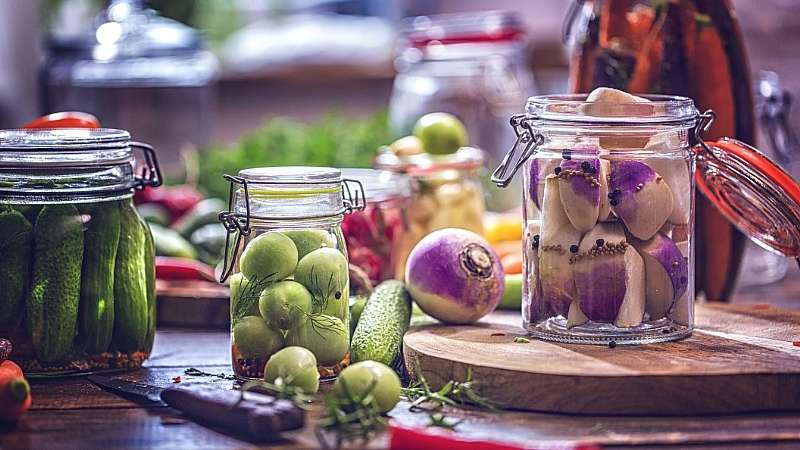
Unlocking the Flavor of Fermentation
Explaining the fermentation process
Fermentation is a natural metabolic process where microorganisms, typically bacteria or yeast, convert carbohydrates into alcohol or organic acids. This process not only preserves food but also enhances its flavor, texture, and nutritional value. Fermented foods are rich in probiotics, which promote gut health and aid digestion.
Types of fermented foods
Fermented foods are found in various culinary traditions around the world. Some popular examples include:
- Sauerkraut: Fermented cabbage with a tangy and crisp flavor.
- Kimchi: A Korean staple made from fermented vegetables, usually cabbage and radishes, with a spicy and tangy taste.
- Yogurt: Fermented dairy product made by adding live cultures to milk, resulting in a creamy and tangy product.
- Kombucha: A fizzy tea beverage that undergoes fermentation with the help of a SCOBY (symbiotic culture of bacteria and yeast).
- Fermented pickles: Cucumbers, or other vegetables, pickled in a salty brine and left to ferment, resulting in a sour and crunchy snack.
Harnessing the benefits of probiotics
Probiotics are live microorganisms that provide numerous health benefits, especially for the digestive system. They help maintain a healthy balance of bacteria in the gut and support immune function. Consuming fermented foods rich in probiotics can contribute to overall well-being and improve digestion.
Making sauerkraut and other fermented vegetables
Making sauerkraut and other fermented vegetables at home is a rewarding and straightforward process. Here’s a basic sauerkraut recipe to get started:
- Finely shred a head of cabbage, removing the outer leaves.
- Place the shredded cabbage in a large bowl and sprinkle it with salt.
- Massage and squeeze the cabbage, allowing the salt to draw out the liquid.
- Transfer the cabbage and liquid into a clean jar, packing it tightly.
- Use a weight or a smaller jar filled with water to keep the cabbage submerged.
- Cover the jar with a clean cloth or a fermentation lid to allow airflow while preventing any contaminants from entering.
- Place the jar in a cool and dark location, away from direct sunlight.
- Check the sauerkraut every few days, skimming off any scum that may form on the surface.
- Taste the sauerkraut after a week or more, and once it reaches your desired flavor, transfer it to the refrigerator for long-term storage.
Experiment with different vegetables, such as carrots, beets, or radishes, to create your own unique fermented creations.
Preserving with Salting and Curing
The role of salt in food preservation
Salt has been used as a preservative for centuries due to its ability to draw out moisture from food and inhibit the growth of microorganisms. By creating a high-salt environment, bacteria and molds are unable to thrive, allowing for long-term preservation.
Different salting and curing techniques
Salting and curing involve applying salt or a mixture of salt and other flavorings or preservatives to meat or fish. The primary techniques include dry salt curing, wet curing, and brining. Dry salt curing involves coating the food with salt and allowing it to rest, while wet curing and brining involve submerging the food in a saltwater solution.
Preserving meats and fish through salting and curing
Salting and curing are excellent methods for preserving meats and fish without refrigeration. By removing moisture and adding salt, the growth of bacteria is effectively halted, allowing the food to be stored for extended periods. Dry-cured meats like prosciutto and country ham are famous examples of this preservation technique.
Safety precautions and considerations
When preserving food through salting and curing, it is essential to observe proper safety precautions to avoid foodborne illnesses. Here are some guidelines to follow:
- Use food-grade salt to ensure purity and avoid additives that may affect the preservation process.
- Maintain proper curing temperatures and humidity levels to prevent harmful bacterial growth.
- Follow established curing recipes and procedures to ensure the correct combination of ingredients and appropriate salt concentrations.
- Keep cured food in a cool and dry environment, away from direct sunlight and excessive heat.
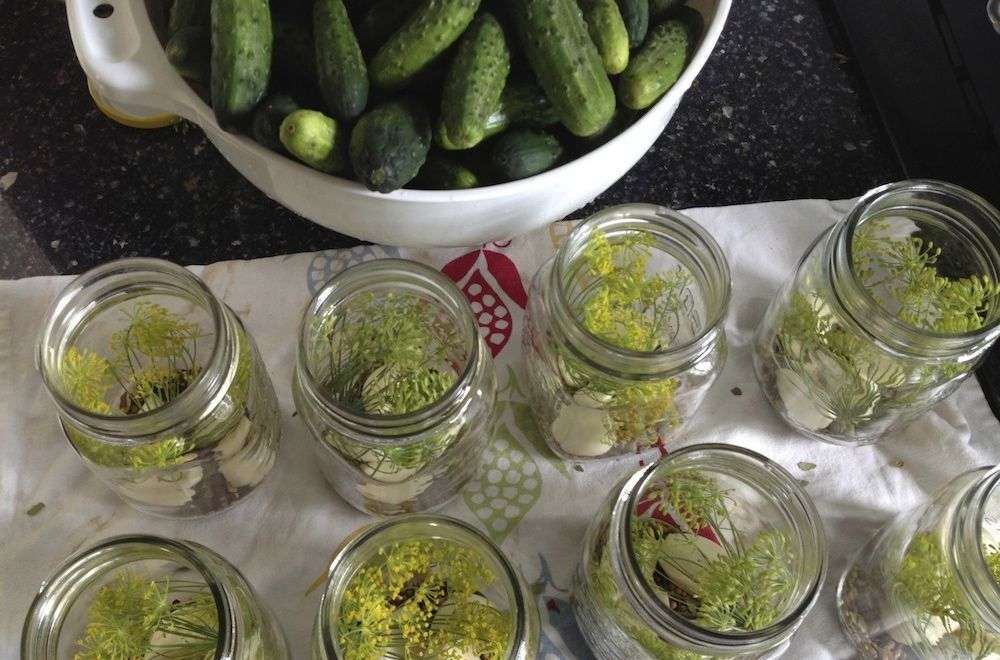
Exploring Alternative Preservation Techniques
Introduction to alternative preservation methods
In addition to traditional preservation methods, there are alternative techniques that can be used to preserve food without refrigeration. These methods offer unique flavors and textures while extending the shelf life of perishable foods.
Using vinegar and oil for preservation
Vinegar and oil are versatile ingredients that can help preserve a variety of fruits, vegetables, and even herbs. Pickling, a process that involves immersing food items in vinegar or a vinegar-based brine, creates an acidic environment that prevents spoilage. Similarly, immersing herbs or vegetables in oil helps preserve them by inhibiting the growth of bacteria.
Pickling fruits and vegetables
Pickling is a popular preservation method that involves immersing fruits or vegetables in a vinegar-based brine. The acidity of the brine inhibits the growth of bacteria, ensuring the long-term preservation of the food. Pickled fruits and vegetables make delicious additions to salads, sandwiches, and various dishes.
Smoking and cold smoking techniques
Smoking is a traditional preservation method that imparts a distinct smoky flavor while effectively inhibiting the growth of microorganisms. Hot smoking involves exposing food to smoke and heat, while cold smoking is a process that occurs at a lower temperature, allowing for longer preservation. Smoked meats and fish are highly flavorful and can be stored without refrigeration.
Exploring Natural Food Preservatives
Understanding natural food preservatives
Natural food preservatives are substances derived from natural sources that help inhibit the growth of bacteria, yeast, and molds. These preservatives can extend the shelf life of food items without the need for refrigeration or chemical additives. Natural preservatives are commonly found in herbs, spices, and certain fruits and vegetables.
Exploring the benefits of herbs and spices
Herbs and spices not only enhance the flavor of food but also possess natural antimicrobial properties. Many herbs and spices, such as garlic, rosemary, thyme, and cinnamon, have been traditionally used as natural preservatives. Incorporating these ingredients into your preserved foods adds both flavor and shelf life.
Effectiveness of natural preservatives
Natural preservatives can be highly effective in inhibiting the growth of microorganisms and extending food shelf life. However, proper handling and storage are still necessary to ensure food safety and quality. It is essential to observe hygiene practices, including washing hands, utensils, and surfaces, to prevent cross-contamination.
Incorporating natural preservatives in recipes
When preserving food without refrigeration, it is beneficial to incorporate natural preservatives into your recipes. By adding herbs, spices, and other natural antimicrobial ingredients, you can enhance the preservation process and add flavor to your preserved foods. Experimentation and creativity with different combinations of natural preservatives can lead to unique and delicious results.
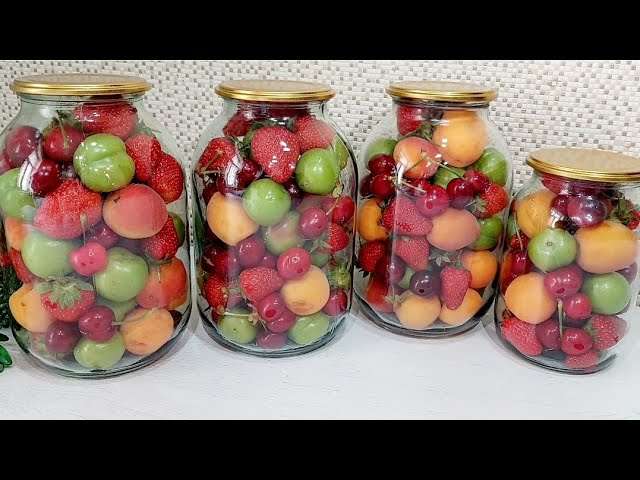
The Role of Temperature and Storage Conditions
Impact of temperature on food preservation
Temperature plays a vital role in the preservation of food. Higher temperatures accelerate microbial growth and can lead to spoilage, while lower temperatures slow down the growth of microorganisms, extending the shelf life of food. It is crucial to store preserved food in suitable temperature conditions to maintain its quality and safety.
Optimal storage conditions for different foods
Different types of food require specific storage conditions to maintain their quality and prevent spoilage. Some general guidelines include:
- Fruits and vegetables: Most fruits and vegetables should be stored in a cool, dry place away from direct sunlight. Some exceptions, such as root vegetables, may benefit from storage in a cool, dark and slightly moist environment.
- Dried foods: Store dried foods, such as dehydrated fruits, vegetables, and meats, in airtight containers in a cool and dry location.
- Canned and bottled foods: Place canned and bottled foods in a cool and dark pantry or cupboard, away from heat sources.
- Fermented foods: Most fermented foods, such as sauerkraut and kimchi, should be stored in the refrigerator to slow down the fermentation process.
- Smoked foods: Smoked meats and fish should be stored in a cool and dry place. If in doubt, refrigeration is recommended.
Creating a suitable food storage environment
To create a suitable food storage environment without refrigeration, consider the following:
- Maintain a stable temperature: Avoid drastic temperature fluctuations, as they can affect food quality and accelerate spoilage.
- Adequate ventilation: Ensure proper airflow in storage areas to prevent the buildup of moisture and the growth of mold.
- Keep food away from pests: Use sealed containers to prevent pests from accessing your preserved foods.
- Organize and rotate: Implement a system to rotate and use older preserved food items first to maintain freshness and minimize waste.
Avoiding food spoilage
To avoid food spoilage, it is crucial to follow safe food handling practices and maintain proper storage conditions. Some tips to prevent food spoilage include:
- Check for signs of spoilage, such as mold growth, off-putting odors, or changes in color and texture.
- Properly seal containers to prevent the entry of air, moisture, and contaminants.
- Store different types of food separately to avoid cross-contamination.
- Regularly clean and sanitize storage areas to prevent the growth of bacteria and other microorganisms.
Factors Affecting Food Shelf Life
Understanding factors that affect food shelf life
Several factors can influence the shelf life of preserved food, including:
- Temperature: Higher temperatures accelerate deterioration, while lower temperatures slow down microbial growth and enzymatic activity.
- Moisture: Excessive moisture can lead to spoilage and the growth of mold and bacteria.
- Oxygen: Exposure to oxygen can cause oxidation and spoilage in preserved food.
- Light: Ultraviolet light can degrade food quality and affect nutrient content.
Understanding these factors and taking appropriate measures can help optimize the shelf life of your preserved food.
Hygiene and sanitation practices
Maintaining good hygiene and sanitation practices is crucial in preserving food without refrigeration. Wash your hands thoroughly before handling food, clean utensils and surfaces, and use fresh and clean ingredients. By practicing proper hygiene, you can minimize the risk of contamination and ensure the safety of your preserved food.
Proper packaging and sealing techniques
Proper packaging and sealing are essential for preserving food without refrigeration. Use airtight containers and packages to prevent the entry of air, moisture, and contaminants. Consider using vacuum-sealed bags, mason jars with tight-fitting lids, or food-grade storage containers specifically designed for preserving food.
Rotation and proper labeling of preserved foods
To minimize food waste and maintain freshness, it is important to implement a rotation system for your preserved food. Label jars and containers with the date of preservation, as well as the contents, to ensure you consume the oldest items first. By practicing proper rotation, you can enjoy your preserved food while it is at its best quality.
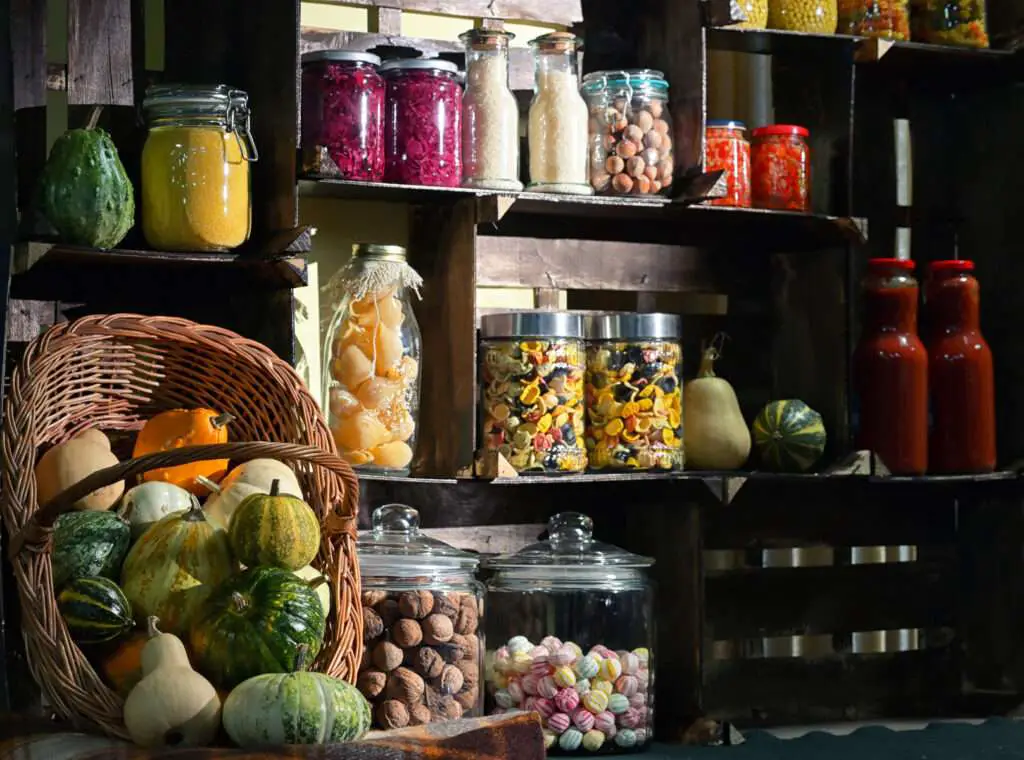
Exploring Cultural Food Preservation Techniques
Cultural practices and food preservation
Food preservation is deeply rooted in cultural practices around the world. Each culture has developed its unique methods and techniques to preserve local ingredients and dishes. Exploring cultural food preservation techniques can provide insights into different flavors, textures, and culinary traditions.
Unique preservation techniques from around the world
- South America: Yucca root is fermented to produce cassava, a staple food in many South American countries.
- Asia: Fish and seafood are dried, salted, and fermented using traditional methods such as salted fish or shrimp pastes.
- North America: Indigenous tribes traditionally used smoking and drying techniques for preserving meat and fish.
- Europe: Pickling and fermenting vegetables, such as sauerkraut and pickles, are popular preservation methods.
- Middle East and Africa: Drying fruits and vegetables, such as dates and figs, is a common preservation technique in these regions.
Exploring these unique preservation techniques can offer new flavors and new ways to enjoy preserved foods.
Preserving food traditions and heritage
Preserving food traditions and heritage is not only about preserving the flavors and techniques but also about safeguarding cultural identity. By keeping traditional preservation methods alive, we honor the wisdom of our ancestors and ensure that future generations can experience the rich culinary heritage of different cultures.
Learning from diverse culinary traditions
Embracing diverse culinary traditions and learning from them can broaden our culinary knowledge and skills. Exploring different preservation techniques allows us to discover new flavors, experiment with ingredients, and develop our own unique preservation methods. The exchange of preservation techniques between cultures helps us appreciate the global diversity of food preservation practices.
Challenges and Limitations of Non-refrigerated Food Preservation
Acknowledging the challenges of off-grid living
Living off-grid or in areas with limited access to refrigeration poses unique challenges when it comes to food preservation. Some common challenges include:
- Limited storage space: Without a refrigerator, finding suitable storage areas for preserved food can be a challenge.
- Climate conditions: Extreme temperatures, high humidity, or frequent power outages can affect the quality and shelf life of preserved food.
- Availability of ingredients: Depending on the location, certain fresh ingredients for preservation may not be readily available.
Limitations of non-refrigerated food preservation
Non-refrigerated food preservation methods have their limitations. Some foods may not be suitable for certain preservation techniques, or the preserved foods may have shorter shelf lives compared to refrigerated options. However, with proper knowledge and preparation, you can overcome these limitations and still enjoy the benefits of non-refrigerated food preservation.
Ensuring food safety and quality
When preserving food without refrigeration, it is crucial to prioritize food safety and quality. Ensure that the preserved food is properly sealed, clean, and free from contamination. Regularly inspect and discard any preserved food that shows signs of spoilage or deterioration.
Finding solutions to overcome limitations
To overcome the challenges and limitations of non-refrigerated food preservation, consider the following:
- Research alternative preservation techniques that are suitable for your specific requirements and climate.
- Invest in proper storage containers and equipment to ensure optimal preservation conditions.
- Plan your food preservation activities based on ingredient availability and seasonal variations.
- Continuously educate yourself on new preservation techniques and improvement in the field to adapt to changing circumstances.
By being proactive and resourceful, you can find solutions that allow you to preserve food effectively without refrigeration.
Sustainable Food Preservation Techniques
Promoting sustainable food preservation practices
Sustainable food preservation practices are essential for reducing food waste, conserving resources, and minimizing the environmental impact of food production. By utilizing non-refrigerated preservation techniques, you can contribute to a more sustainable food system.
Reducing food waste through preservation
Food preservation is a valuable tool in reducing food waste. By extending the shelf life of perishable foods, you can prevent them from ending up in the landfill. Preserving excess produce from your garden or purchasing bulk quantities of seasonal ingredients can significantly reduce food waste.
Environmental impacts of refrigeration
Refrigeration consumes a significant amount of energy and contributes to greenhouse gas emissions. By exploring non-refrigerated preservation techniques, you can reduce your reliance on refrigeration and decrease your carbon footprint. Embracing sustainable preservation practices helps conserve energy and protect the environment.
Advocating for a holistic approach to food preservation
A holistic approach to food preservation includes considering various factors such as seasonality, ingredient sourcing, and appropriate preservation methods. By incorporating sustainable practices from harvesting to preserving, you can minimize waste, support local farmers, and promote a healthier and more sustainable food system.
Conclusion
In conclusion, exploring ways to preserve food without refrigeration allows you to extend the shelf life of perishable foods and reduce food waste. Traditional methods like drying and dehydration, canning and bottling, fermentation, and salting and curing have stood the test of time and continue to be valuable techniques. With an understanding of alternative preservation methods, such as using vinegar and oil, pickling, and smoking, you can experiment with unique flavors and textures. Incorporating natural food preservatives, exploring cultural preservation techniques, and adopting sustainable practices further enhance your food preservation journey. By embracing non-refrigerated preservation methods, you promote self-reliance, reduce environmental impact, and contribute to a more sustainable food future. So go ahead, explore and experiment with preservation methods, and enjoy the benefits of self-reliance and food security.

